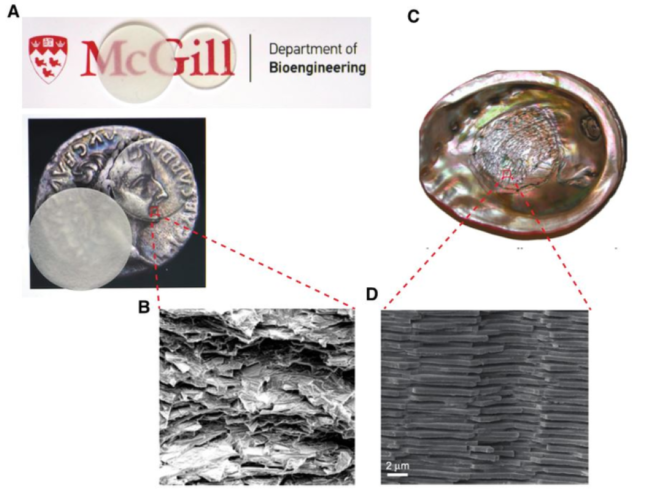
The team from McGill University believe the material has a range of applications, including future cell phone screens.
“Until now there were trade-offs between high strength, toughness, and transparency,” said Allen Ehrlicher, an associate Professor in the Department of Bioengineering at McGill University. “Our new material is not only three times stronger than the normal glass, but also more than five times more fracture resistant.”
Drawing inspiration from nature, the scientist created a new glass and acrylic composite material that mimics nacre or mother of pearl. “Nature is a master of design. Studying the structure of biological materials and understanding how they work offers inspiration, and sometimes blueprints, for new materials,” said Ehrlicher.
Researchers reveal secrets of nature’s toughest material
“Amazingly, nacre has the rigidity of a stiff material and durability of a soft material, giving it the best of both worlds,” he said. “It’s made of stiff pieces of chalk-like matter that are layered with soft proteins that are highly elastic. This structure produces exceptional strength, making it 3000 times tougher than the materials that compose it.”
The scientists took the architecture of nacre and replicated it with layers of glass flakes and acrylic, yielding an exceptionally strong yet opaque material that can be produced easily and inexpensively. They then made the composite optically transparent.
“By tuning the refractive index of the acrylic, we made it seamlessly blend with the glass to make a truly transparent composite,” said Ali Amini, a postdoctoral researcher at McGill. They next plan to improve the fracture resistant glass by incorporating smart technology allowing the glass to change its properties, such as colour, mechanics, and conductivity.
The team’s paper - Centrifugation and index-matching yields a strong and transparent bioinspired nacreous composite – has been published in Science.





Project to investigate hybrid approach to titanium manufacturing
What is this a hybrid of? Superplastic forming tends to be performed slowly as otherwise the behaviour is the hot creep that typifies hot...